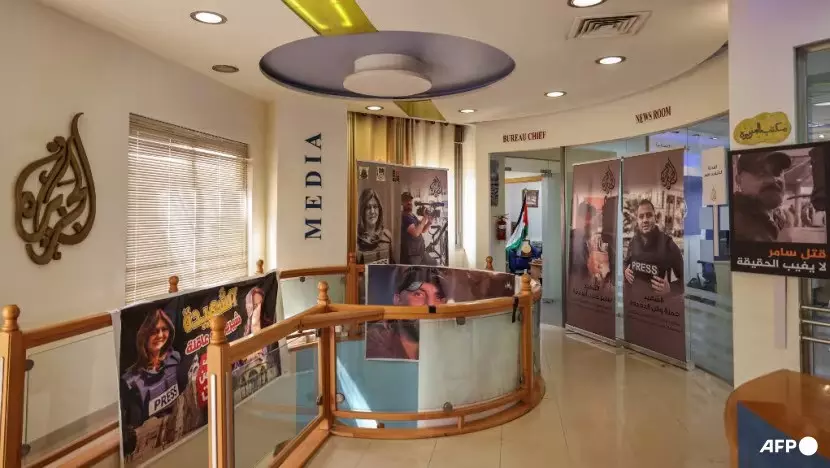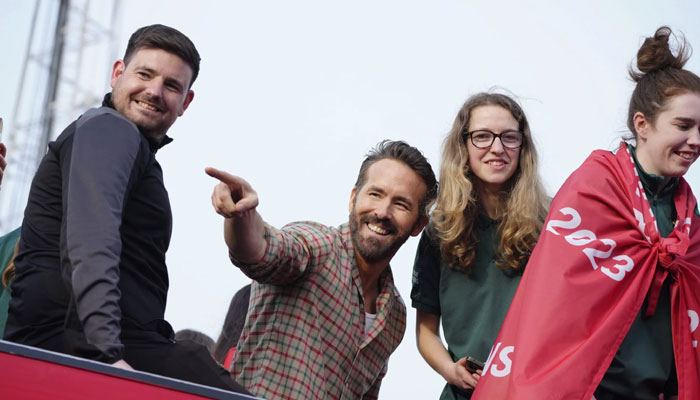Performances by the Canadian circus troupe, Cirque du Soleil, are more akin to concerts as they feature dramatic lighting, rock music, avant-garde acrobatics and inventive juggling. Some of its stars juggle ping pong balls, flinging them into the air with their hands, feet and even their mouth. Then they move on to juggling huge hats which are thrown out like frisbees into the audience.
Just when you think it couldn’t get more daring, it does, and the acrobats lie on their backs pumping their legs up and down to spin their colleagues who are balancing on their feet. Other performers have even included children who catch a spinning top on a rope between their hands. The team tosses it to each other and passes it back-and-to whilst somersaulting.

As each act betters the previous one, there’s an epic sense of build-up and thanks to some cutting-edge AV, Cirque doesn’t drop the ball. At the start of Crystal, one of its newest stadium shows, it’s common to see spectators look on in awe. Crystal is full of the death-defying stunts that Cirque has become famous for but the difference is they are all performed on a rock-hard ice rink.
Barco projectors beam images on to the rink which precisely follow the skaters ©Olivier Brajon Breathtaking balancing acts There’s no room for error as trapeze artists zip through the air high above the icy surface. Another scene involves an acrobat dressed in winter woolies constructing a precarious platform of chairs stacked to over 20-feet above the ice. Reaching the top is just the start as he performs breathtaking balancing acts when he gets there.
The show’s centrepiece comes when performers dressed like ice hockey players race around the rink and leap over ramps while performing mid-air stunts in unison. One wrong move wouldn’t just see them slam into the ice, it could also lead to razor-sharp blades flailing through the air. However, even that isn’t what makes the audience’s jaws drop.
That moment comes when a solitary skater dressed in a blue and white jumper pirouettes around the rink. There’s a spotlight shining down so that she seems to cast a shadow but it soon becomes clear that all is not what it seems. Although it appears to be a shadow, as it’s crystal clear and precisely reflects the performer’s movements, it is in colour and is wearing red clothes not blue and white like the skater.
Crystal combines synchronised skating and acrobatics ©Olivier Brajon Collective audience double-take It is common to see spectators doing a double-take as they realise that their eyes aren’t deceiving them. The shadow is actually a projection from an array of overhead 20 Barco HDX W20 Flex units which are so well-hidden, and bleed so little on to the performer, that if the shadow had been black you wouldn’t know it was a projection. The sharpness of the image is thanks to the xenon lamps in the Barcos.
Electricity passing through ionised xenon gas produces powerful, bright, crisp light but this is far from the only trick in Cirque’s spell book. Getting the projection to precisely track the performer’s movements takes more than the wave of a magic wand or a dab hand with a movable spotlight, known in the trade as a follow spot. Instead, the effect is thanks to the BlackTrax realtime tracking solution from Canadian company, CAST.
This can pinpoint the precise position of performers through mini trackers on their costumes enabling spotlights to follow them automatically. It increases accuracy and reduces manpower as Cirque’s technical team explains. “The biggest advantage is being able to light thirty performers without having thirty follow spots,” says Patrick Smithers, head of visuals on Crystal.
“It allows us to track multiple performers with multiple fixtures with efficiency and reliability. If we were using follow spots with operators for each fixture, the whole show would have a bigger footprint and the fixed costs would increase exponentially,” adds Miguel Oliveira, the show’s assistant head of video. The accuracy of the system is part of the reason why the performers don’t interfere with the projections on the ice rink.
The solitary skater dressed in winter woolies is just the start. At one point, actual snow falls from six overhead Ultratec Silent Storm snow dispensers and the projectors make it look like it has piled up on the rink. Thanks to the trackers, the skaters appear to cut trails through the digital snow which precisely follow the actual path they have taken.
On another occasion the projectors appear to turn the rink into a piece of paper and the skaters leave digital calligraphy on it which again follows their exact route. As Oliveira explains, the effects even follow the skaters when they stray from their prescribed route, making every performance different. “It allows the performers to interact through realtime rendering, with the projected content, providing a singular and immersive experience to our guests.
Each show will have its uniqueness, as one will never perform the same act in the same exact way as the previous show.” A projection-mapped set forms the backdrop to Crystal ©Olivier Brajon Through the thin ice The 100-minute performance tells the surreal story of a girl who falls through an icy pond into an imaginary world which is the opposite of her dull life. There she meets her antithesis, an adventurous acrobat accustomed to performing outlandish stunts.
With her flowing ginger hair, fluttering red scarf and blue and white dress she looks like Anna, the princess from Disney’s smash hit ‘Frozen’, and the show plays out like a live action fantasy film. The ice rink becomes the stage as the projectors in the rafters transform it from the pond to a backyard reflecting the life that the protagonist left behind. Suddenly a group of performers surrounds her and launches her up with their bare hands on to a trapeze that dangles down from above.
Then she balances on the bar and flips around it all whilst wearing ice skates. The tiny BlackTrax sensors at the bottom are plugged into the charging portals above ©Roberto Larroude When the snow falls down on the rink and billows around like a blizzard, a double act of aerial contortionists cut through it high above the ice as they soar around the stadium clinging on to a silky red strap. They too are wearing skates and as the strap descends, they kick off on the ice giving them more speed to soar even higher.
There’s even a set which resembles an iceberg and towers over the rink throughout the show. Booths for music acts are carved into the set which is flanked by stylised cutouts of snowy trees. Lights glow from inside the iceberg-like structure and projections are beamed on to it.
They range from scenes of the protagonist’s life to snowflakes falling upwards as a reminder that the show is meant to be taking place under the ice. The projections culminate with eerily-lifelike cracks on the ice rink followed by a crash as the lights go down and the star is sent back to her homeworld. The footage was created by Canadian content production company, 4U2C which was bought by Cirque in 2020.
It is stored on six Disguise D3 GX2 video servers which feed into eight Barco UDX 32K projectors trained on the set and the 20 pointing at the ice rink. Even when they turn the floor into busy city streets and an overgrown garden, the images still don’t bleed on to the performers. Hijinx from ice hockey players is one of the highlights of Crystal ©Olivier Brajon Lighting and projection in harmony The stage is so well lit that there’s no chance of the audience missing any of the action.
There are 57 Robe BMFL Wash Beams, 36 Clay Paky Sharpy Wash 330 wash lights, 14 Clay Paky B-Eye K20 beam lights, six Clay Paky Mythos spotlights and four ultra-bright Martin Atomic 3000 stroboscopes, all controlled by two GrandMA2 lighting consoles. Smithers explains that “by using both lighting and video elements simultaneously we can avoid the projections being visible on the performers.” BlackTrax can be integrated into lighting and video systems and Smithers describes it as “a very user friendly system”.
It has robust compatability with both GrandMa2 and D3 from Disguise which is what Crystal was built around. It explains why Oliveira says the “Blacktrax system became a logical choice.” He adds that “the wall, the floor and the ramps have specific mapping settings and maskings that avoid spilling between them.
The positioning of the projectors along the grid, with the design of the costumes, allow us to make the spilling on to the performers imperceptible.” It does the job both on stage and behind the scenes. “The tour travels with around a hundred people,” says Crystal’s production manager, Michael Davis adding that “we also hire 110 local workers to help with the set-up and on different departments, such as wardrobe.
” Thanks to the efficiencies of BlackTrax, just nine of the crew are technicians. Every person matters to the bottom line of the show as it doesn’t travel light. A massive 1,250 pieces of clothing are worn in every performance and it brings more than 4,000 to every location.
The equipment fits into 434 road cases, 160 racks and a few dozen other types of packing containers which are transported in 18, 55ft long transport trailers from city to city. The tiny BlackTrax sensors at the bottom are plugged into the charging portals above ©Roberto Larroude Good relationship with the team at CAST Oliveira points out that Cirque isn’t short of remote after-sales support. “We have a great relationship with the team at CAST, and they are very responsive and flexible in finding solutions to support us on tour.
” He adds that the BlackTrax system is “only calibrated at the beginning of every city and then there are touch-ups as needed if a camera position moves or a lighting fixture is swapped out.” The more Cirque has got used to the BlackTrax system, the more it has got out of it. “It’s a network-based system.
The more comfortable you are with the network, the easier it will be to design all the necessary connections and communications between systems,” explains Oliveira. However, he says that the basics shouldn’t be forgotten, such as ensuring that “camera lenses are cleaned, there is quality cabling, servers with proper maintenance, and so forth. The details do make a difference on the quality and solidity of the tracking.
” It does however have its quirks. “It’s very precise,” says Smithers. “However the eventual precision depends on the outputs that you’re sending the object position to.
Some lighting/projections will follow more accurately and quickly than others, and slower moving objects are tracked much more precisely than fast-moving ones.” Nevertheless, “the biggest challenge with the show is working with electronics on an ice stage. Water doesn’t combine with electronic devices,” says Oliveira.
“The way to surmount it is to find creative ways to do active maintenance to the system while having shows during the day.” It’s proof that even the technical team need to be masters of juggling to keep this show on the road. There's almost as much action in the rafters as there is on the rink during each performance.
©Roberto Larroude.



















